Magic the Gathering is the first Trading Card Game ever created. Over the course of its 30 year existence it has gained an absolutely massive following and is played around the world in 10 different languages. With over 20,000 unique cards, it is fair to say that MTG is one of the most complex games in the world. With so much going on it is difficult to know how to start playing! We have compiled this guide to help new players with the fundamentals of gameplay. Keep reading below to start your MTG Journey.
Colours
Ever since the beginning Magic the Gathering has utilised different styles of play that are broadly divided into 5 different colours. These colours are: White, Blue, Black, Red and Green. Each card is generally associated with one or more of these colours.
White White represents peace, law, structure, selflessness, and equality. White is associated with angels and other good aligned creatures. Mechanically it focuses on strategies such as Life Gain and Counters. White’s basic lands are Plains.
Blue Blue represents knowledge, deceit, caution, deliberation, and perfection. is associated with control and utilises a lot of sorcery and instant cards. A lot of cards that allow you to draw and counter other players spells are Blue. A ton of Blue creatures also have combat trickery such as Ninjutsu and Flying. Blue’s basic lands are Islands.
Black Black represents power, self-interest, death, sacrifice, and uninhibitedness. Black cards utilise a ton of creature destruction and effects that allow you to return cards from the graveyard. Black’s basic lands are Swamps.
Red Red represents freedom, emotion, action, impulse, and destruction. It focuses on dealing a lot of damage, whether through sorceries or creatures. It also utilises keywords like Haste, Double Strike and Trample. Red’s basic lands are Mountains.
Green Green represents nature, wildlife, connection, spirituality, and tradition. Green utilises a ton of powerful creatures, as well as token creatures and fast mana acceleration. Green’s basic lands are Forests.
Colourless Some cards in the game aren't associated with any colour and are therefore colourless. These tend to be artefacts that don't have a strong connection to any of the five colours.
Types of Cards
There are many types of card that exist in the game. These can broadly be grouped into 2 categories: Permanents and Non-permanents. Permanent cards remain on the battlefield after they have been played whilst non-permanents are sent to the graveyard after they have been cast. Land, Creature, Artifact, Enchantment, and Planeswalker are all standard permanent card types and Non-permanent types are Instant and Sorcery.
Land Land can only be played once per turn and can be tapped for mana! Many special lands exist that can produce multiple colours but the five basic lands: Plains, Islands, Swamps, Mountains and Forests each just produce one mana of their respective colour. There is also no limit on the number of basic lands you can include in your deck.
Creatures Creature cards represent monsters, beasts and minions that serve the player. They have attack and defence scores that are known as Power and Toughness that they utilise when they attack and block opposing attacks. Creatures suffer from summoning sickness, which means that can't attack or use any of their abilities on the turn they are played.
Artefact These cards represent magical items, constructs and other objects and equipment. They stay in play after you cast them and can usually be tapped to provide a benefit. Classic examples of Artefact include Sol Ring and Treasure Tokens.
Enchantment Enchantment cards are similar to Artefacts but tend to have a colour. Unlike Artefacts they generally don't have to be tapped to get their effects.
Planeswalker In the Lore a Planeswalker is a powerful character that has the ability to travel between the many planes of the MTG multiverse. In the game, a Planeswalker card represents one of these unique characters and operates similarly to a creature card except it doesn't attack and has a diverse selection of special abilities.
Sorcery A Sorcery is never placed onto the battlefield and it is resolved as soon as its mana cost is paid. Sorceries represent a one-shot or short term magical effect.
Instants Instants are very similar to Sorcery cards but they can be activated in response to other cards and even on your opponents turn.
Formats
Since Magic the Gathering was released in 1993, it has undergone a number of changes. One of the most important introductions in the game is the concept of Formats. Formats are the various different ways that the game can be played. Each format provides rules for deck construction, including deck size and which cards are allowed, and gameplay. Tournament formats officially sanctioned by Wizards of the Coast are divided into two classifications - Constructed and Limited. A third category exists, known as Casual, which includes formats not used in tournament or competitive play.
Popular formats currently include:
- Standard
- Modern
- Pioneer
- Vintage
- Legacy
- Pauper
- Booster Draft
- Sealed Deck
- Commander
Standard formerly known as Type 2 or Type II, is the most widely sanctioned constructed format at all levels of organized play. It is a rotating format, which means that only allows cards from a selected number of expansions are allowed, which changes over time. The rotating comes into effect once a year and the current sets allowed are Phyrexia: All Will Be One, The Brothers' War, Dominaria United, Streets of New Capenna, Kamigawa: Neon Dynasty, Innistrad: Crimson Vow and Innistrad: Midnight Hunt. The format has 60 card decks and also utilises a ban list.
Modern Modern is a constructed format that allows expansion sets, core sets, and Modern Horizons; from Eighth Edition forward, save for the Modern ban list. The modern format thus encompasses all cards that have been printed in a core or expansion set using the modern card frame. Modern only sets, such as Modern Horizons, release new cards that are legal in Modern without ever being legal in Standard.
Pioneer Pioneer is a constructed format that allows expansion sets and core sets from Return to Ravnica forward, save for the Pioneer ban list. In this way it fulfils a similar role to Modern, but from a different jumping-off point.
Booster Draft In Booster Draft, each player opens a booster pack and picks a single card from the pack in secret. Everyone then passes the remainder of their booster to player on their left, each player then picks a card from the pack they just received before passing again. These steps are repeated until all the cards in the first packs have been selected. Once all the packs have been opened and all cards selected, everyone builds a deck from the cards they have pulled. You may add as many basic lands to your deck as you’d like, but each deck must have at least 40 cards.
Sealed Sealed Deck is a Limited format which is used in many events. Players each receive the same amount of unopened packs, typically six, then construct their decks from only those cards and basic lands.
Vintage , originally known as Type 1 or Type I, is a format that allows for the use of almost all printed cards, excluding silver-border sets, double faced cards and the ban list. For this reason, Vintage is considered one of the most expensive formats.
Legacy Legacy is similar to Vintage in the scope of cards allowed, but its card list is much more limited. Due to the restricted cards, these games tend to much slower.
Pauper Pauper is, in opposition to Vintage, a very cheap and accessible format. Only common cards are allowed and it also has a small ban list.
Commander originally known as Elder Dragon Highlander or EDH, Commander is a casual multiplayer format that supports 4 players with 100 card decks. Each player starts at 40 life, and each player's deck is headed by a legendary creature designated as that deck's commander. The format has become very popular in recent years, with the release of official pre-con Commander decks and full Commander sets like Commander Legends.
Deck Construction
Deck construction is an important part in many MTG formats. Generally decks follow a similar set of rules regardless of the format. A players deck is also referred to as their library.
- Deck Size Deck size in most constructed formats is 60 and in limited formats it is instead 40. The most notable exception is Commander, which uses a 99 card deck and a Commander card.
- Four Card Limit A player may have no more than 4 copies of a card in their deck. There are some exceptions to this, such as Basic Lands (which are unlimited). In Commander a player may have no more than 1 copy of a card in their deck.
Taking a Turn
A turn in a Magic game consists of five phases, which are always played in the same order.
Beginning phase The beginning Phase is divided into 3 steps: The Untap Step, the Upkeep Step and the Draw Step.
- Untap Step The first thing that happens in this step is that all tapped cards that you control untap. This is represented by turning your cards from a horizontal position into a vertical position.
- Upkeep Step The Upkeep step is where you pay any costs or resolve any card effects that mention the Upkeep step.
- Draw Step At this point you draw a single card from the top of your deck. If you cannot draw a card from your deck, then you lose.
Pre-combat main phase During the Main Phase you can play any cards (except instants) from your hand. You can also place a land onto your side of the field, but note that you can only play 1 land per turn.
Combat phase During the Combat Phase the active player may choose to attack with as many creatures that they can by tapping them. They must declare all of their attackers at once. The opponent then decides which creatures they will use to block before damage is calculated. See more on attaching below.
Post-combat main phase The post-combat main phase is identical to the main phase before combat.
Ending phase This is the last phase of the turn before the next player starts with their own beginning phase.
Mana and Playing Cards
In MTG, almost everything has a cost and this cost must be paid with mana! Mana is produced in many different ways but the most common way is with Lands. When you want to play a card, your first tap the land (or lands) with the appropriate amount of mana. Tapping is a simple process where your rotate the card into a horizontal position.
Many cards require a specific colour of Mana to be played. For example a card may require 2 Black and 1 colourless mana as represented in it's top right corner. In order to be played, this card's cost must be paid with 3 mana and at least 2 of that mana must be black! Colourless mana can be provided by paying mana of any colour.
Attacking
During a player's Combat Phase they may choose to declare an attack. To do this, you tap any number of creature cards that aren't already tapped (and aren't suffering from summoning sickness). You can't decide which of your opponent's creatures you want to attack, but you can chose to target an opponent directly or to attack one of their Planeswalker cards, if they have any. If you have multiple opponents (such as in Commander), then you must decide which of your creatures is attacking which opponent.
Your opponent then decides which of their creatures will block your attackers. Creatures that are tapped can't block but choosing to block does not tap them.
Once blockers have been declared you then calculate damage. Creatures involved in the combat divide damage equal to their Power (the first number in the bottom right) to the creatures it is fighting. If a creature is only fighting one other creature then it deals all of its Power to that creature. All creatures in combat deal combat damage at the same time, except when one or more creatures have first strike or double strike. If a creature takes damage exceeding their Toughness (located next it's Power) then it is removed from the battlefield. An unblocked creature instead deals damage to its original target.
The Stack
Whenever you play a card, it doesn't go straight onto the battlefield. Instead it is placed into an imaginary zone known as the Stack. Cards that are played in response, such as Instants, are then also placed into the stack and are resolved in reverse order once all players can't, or choose not to, respond with any other spells or abilities. Understanding the stack isn't super important when first learning the game, but is vital once you start playing with more advanced strategies.
How to Win
The basic way to win a game of Magic the Gathering is by reducing your opponent, or opponents, to zero life. In most formats of the game, players start with 20 life, which is represented by a twenty-sided die.
Another way to win is if your opponent cannot draw from their deck at the beginning of their turn, or if a card or ability requires them to do so!
In addition to this, there are many alternative win conditions. Many of these are laid out on specific cards, such as Poison Counters and the effects of cards like Approach of the Second Sun.
Check out a selection of awesome Magic the Gathering products down below in the related products section! Alternatively, you can browse our entire range of Magic the Gathering products by clicking the button below.
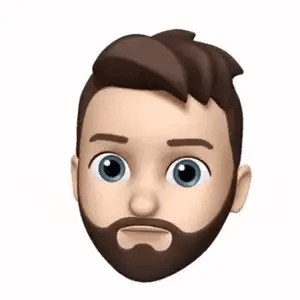

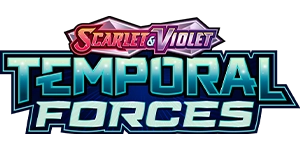

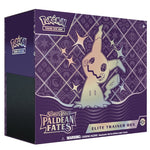
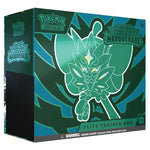
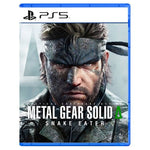
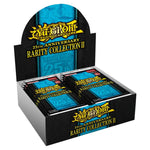

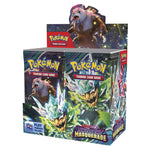
Comments